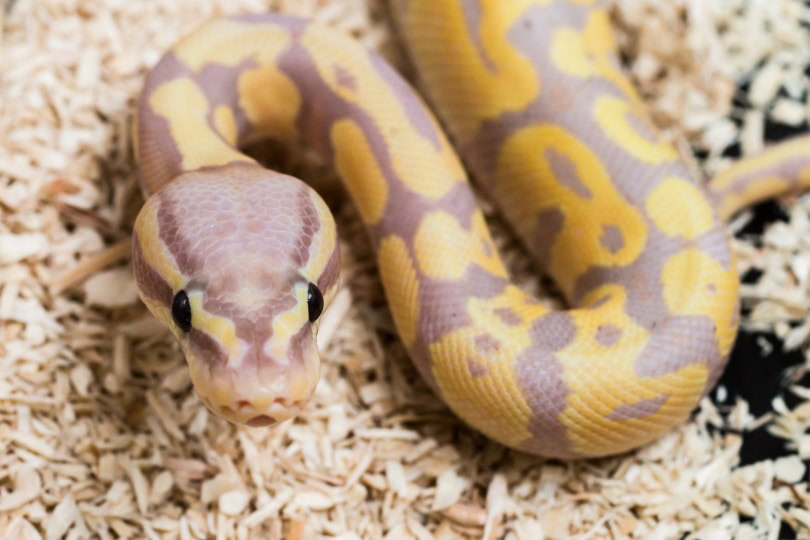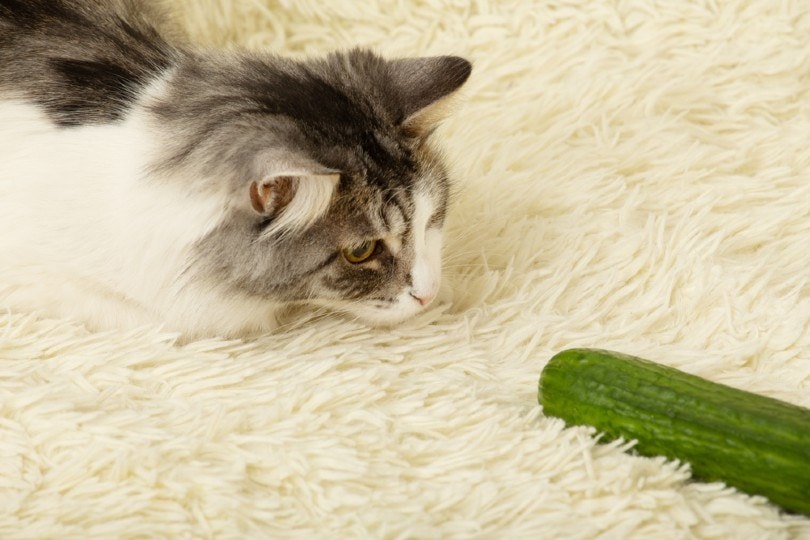VET APPROVED

The information is current and up-to-date in accordance with the latest veterinarian research.
Learn more »Ball pythons have become popular pets for reptile enthusiasts and people who are new to snakes. Owners will find that their ball pythons are nocturnal. These snakes tend to prefer dark spaces and are more active at night. Their eyes are specifically adapted to seeing in dim lighting.
Ball pythons are ambush predators, meaning they prefer to trap prey by stealth, luring, or instinctive strategizing rather than chasing their game down. This means they spend most of their time lying in wait for their prey, typically in the cover of shadows. That said, they need a visual stimulus to initiate a strike.
Let’s learn more about ball pythons and their night-time vision.

How Do a Ball Python’s Eyes Work?
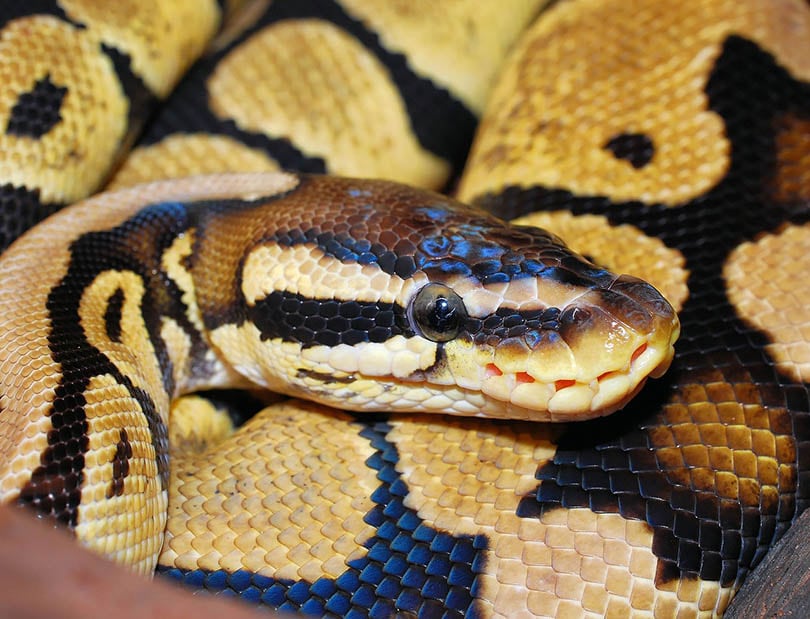
A ball python’s vision is well adapted to the night. Their retinas possess a high number of rods, which rivals that of other night-time predators.1 In fact, the overwhelming majority of their visual cells are rods, outnumbering the cones by a ratio of around 10:1. This means these snakes are good at visually seeing movement in dim lighting conditions.
Ball pythons possess two types of cones in their eyes. The first type is more numerous than the other and helps them perceive a certain amount of color. The second type of cone cell (which is scarcely found in their retinas) helps them perceive the ultraviolet spectrum.
In short, a ball python’s eyes are specifically adapted to help them hunt at night. Their daytime vision is limited, and their color perception isn’t as acute as that of many other species (especially ours).
Infrared Heat Sensing
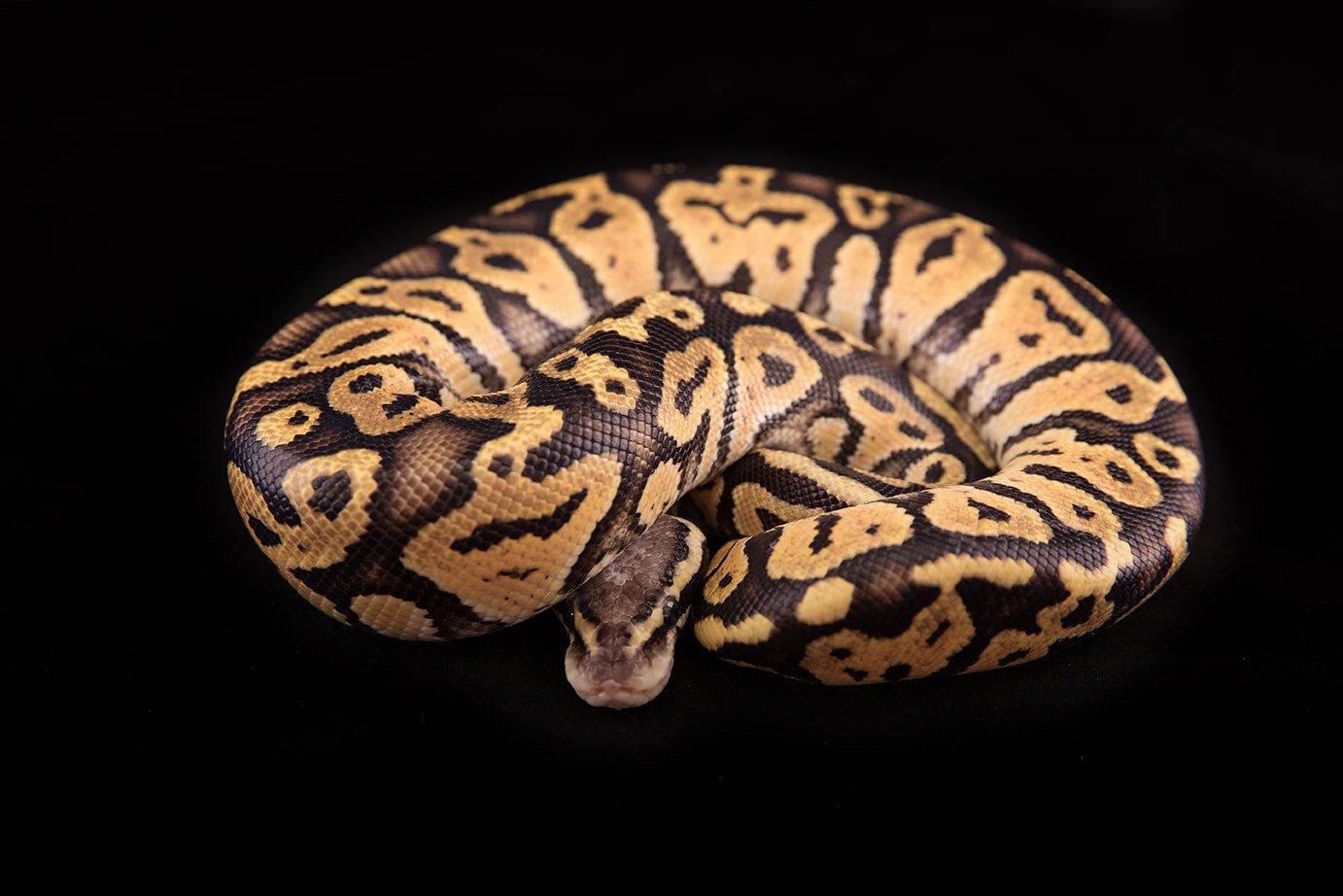
When in the dark, ball pythons use infrared heat sensing to perceive their surroundings. They use a series of “pit organs” located in the head. These resemble a series of holes across the face and mouth and can sense the infrared radiation of heat from the snake’s surroundings.
Each pit organ contains a series of membranes, nerves, and air chambers that rapidly detect the air’s temperature and develop a thermal “picture” for the snake to observe. The pit organs have two air chambers. One detects environmental heat while the other detects nearby animals.
Using their pit organs, ball pythons can perceive changes in degrees of heat radiation. This enables them to make informed and precise decisions. It can also help them differentiate between objects and animals easily and even determine what kind of animal they’re sensing.
The pit organs can enable them to sense an object or creature that is almost 10 feet away! As ambush predators, they will therefore have time to plan their attack. They can sense the size and density of heat of an approaching mammal and make quick calculations on the threat level of the target.
A ball python strikes using their vision and infrared perception. A strike is only initiated if they have enough of a visual stimulation (i.e., they can see the prey move), and it is directed toward the prey using infrared perception.2
Do Ball Pythons Sleep?
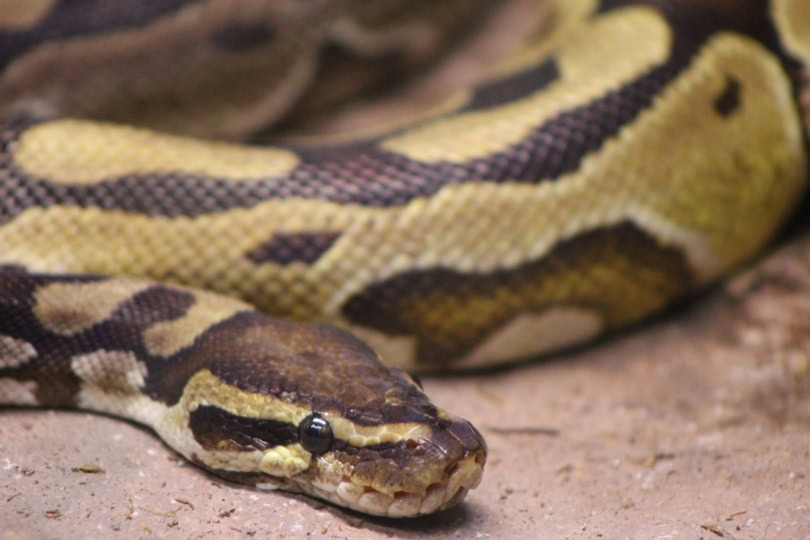
Snakes don’t have eyelids. Instead, they have what’s called a “brille.” This is a layer of skin that goes over a snake’s eye to protect it from dust or dirt. It’s ordinarily indistinguishable from the eye, but when the snake molts, the brille becomes cloudy and sheds with the rest of the skin!
With no eyelids to speak of, many wonder if these snakes sleep at all. Ball pythons do sleep. In fact, sleeping is one of their favorite activities; the average adult ball python may sleep for up to 20–23 hours every day. These pythons are considered pretty lazy in the snake world.
Their love for sleeping is due to their size and the amount of food they need to digest at once. Ball pythons will swallow their prey whole, and the digestion process of a whole rodent is arduous. So, while they’re digesting their prey, they’ll usually coil up in a dark place and take a nap.
Ball pythons usually don’t sleep for 23 straight hours. However, the amount of activity in between naps varies from snake to snake. Some owners report that their ball python will take a trip around their enclosure every so often, while others say that their ball python moves their head, looks around, and then goes right back to sleep.
Owners of ball pythons will want to keep their pet’s usual behavior in mind. Even though their sleeping habits might seem excessive to us, they’re typical for snakes. If your ball python seems sleepier than usual, though, consider what factors might be influencing the behavior. For example, if they were fed recently, they’d be quite sleepy, and if they’re molting, they’ll sleep for weeks without much activity.
If your snake seems listless or unwell, a trip to an exotic veterinarian can help confirm if your pet is ill or just lazy. Of course, every ball python is different. Tracking what kind of behavior your snake normally exhibits can help you ease your worries and keep your pet safe.
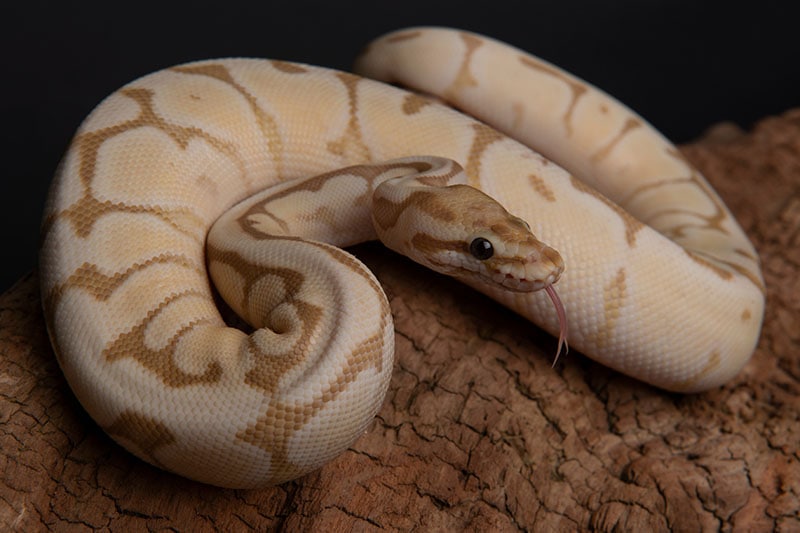

Summary
Ball pythons are unique and wonderful pets to bring into your family. They’re great options for enthusiasts and new owners alike. Their infrared heat sensing is a distinguishing feature that sets them apart from many other animals kept as pets. We hope that you’re able to learn more about these wondrous creatures both from literature and with hands-on experience.
Featured Image Credit: Natnaphat, Shutterstock
